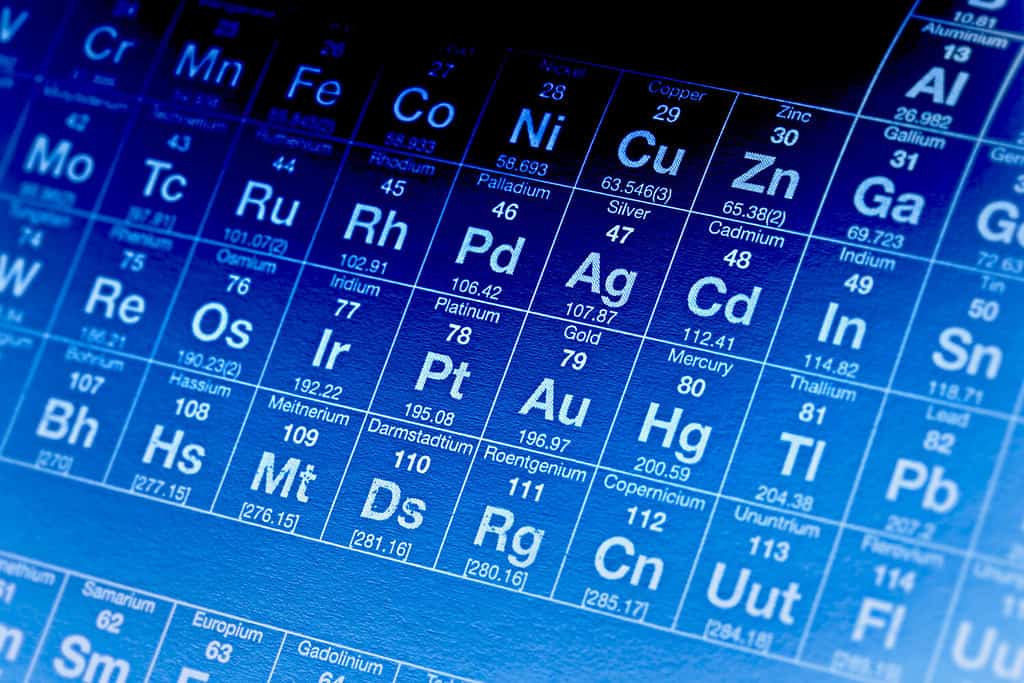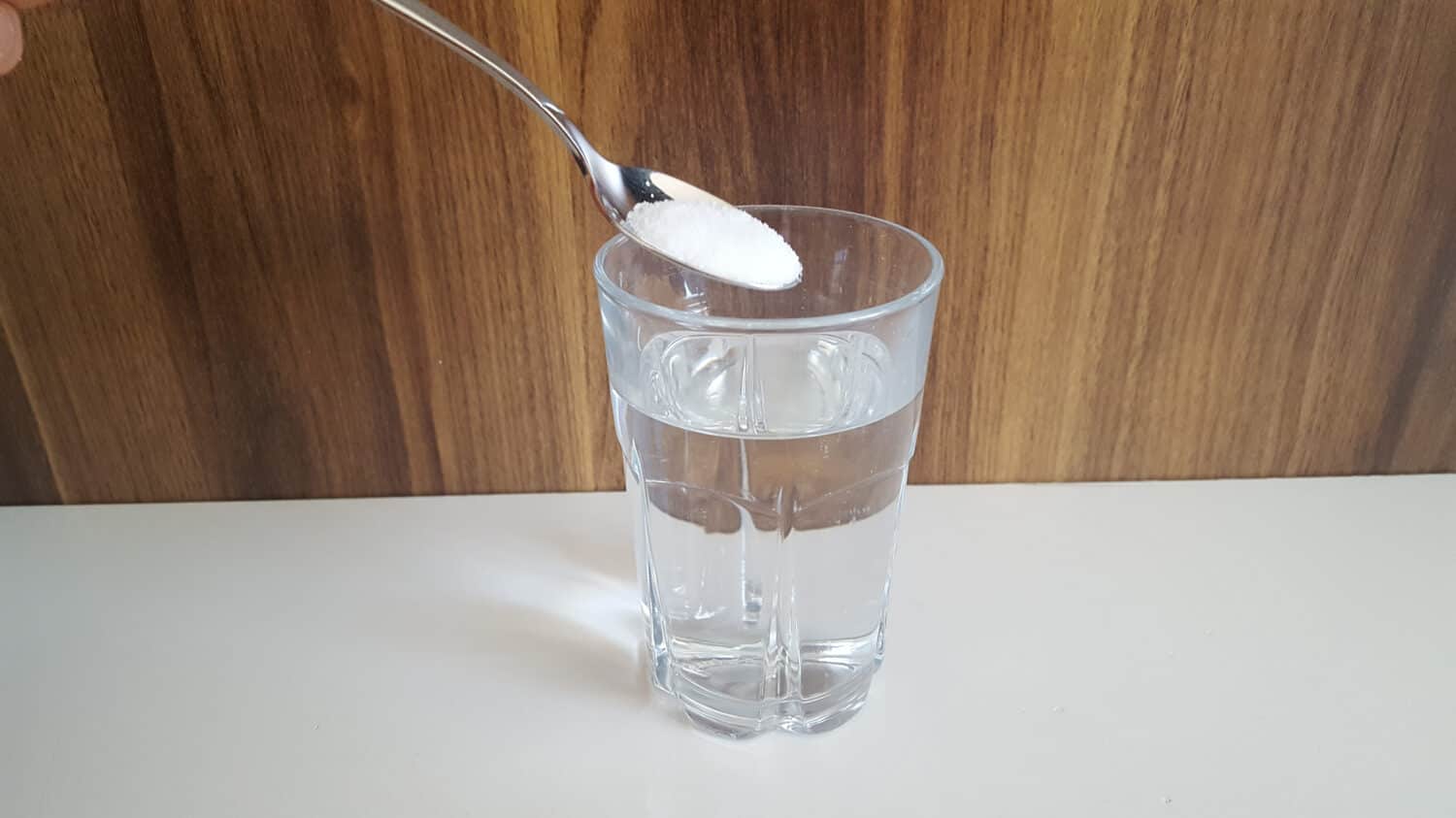If you’ve eaten salty french fries, you’ve tasted sodium chloride.
Table salt, or sodium chloride, consists of sodium (Na) and chlorine (Cl). There’s a ton of sodium chloride in the ocean, salt lakes, and salt mines. It also helps make our everyday lives that much better.
Along with seasoning french fries, this compound makes tasks possible such as deicing roads or preserving food. They also use sodium chloride in healthcare to keep patients from dehydrating.
In this article, we’ll explore the molar mass of sodium chloride and why it matters. A mole is like a counting unit, just like we count objects using numbers 1, 2, 3, and so on. In chemistry, though, we use moles to count atoms and molecules. Then, scientists can use these measurements to understand how compounds like sodium chloride behave.
So, what’s the molar mass of sodium chloride? Read on to find out.
Key Points
- Sodium chloride (NaCl) is a compound commonly known as table salt.
- It consists of sodium (Na) and chlorine (Cl).
- The molar mass of sodium chloride is approximately 58.5 grams per mole (g/mol).
- Molar mass describes the mass of a substance in a unit called a mole.
- A mole is a chemical unit to represent a specific number of atoms, molecules, or other particles.
- Knowing the molar mass helps determine the amount of a substance in a given sample.
- Calculating molar mass involves adding the atomic masses of the constituent elements.
- Sodium chloride is widely used in various applications, including food seasoning, deicing roads, and preserving food.
- Sodium chloride occurs naturally in saltwater, salt mines, and salt lakes.
- Other compounds with similar molar masses include potassium chloride, calcium chloride, silver chloride, magnesium chloride, and zinc chloride.
Molar Mass of Sodium Chloride

A mole is a unit of measurement used in chemistry to represent a specific number of atoms, molecules, or other particles.
©Sergey Nivens/Shutterstock.com
Sodium chloride has a molar mass of about 58.44 grams per mole. But what does this number mean exactly? If you take 58.44 grams of sodium chloride, a combination of sodium and chlorine atoms, you would have one mole of sodium chloride.
Molar Mass
Let’s break it down a little further.
Sodium chloride has two different types of atoms: sodium and chlorine. Sodium is a metal, while chlorine is a gas. When they come together, they form the compound sodium chloride.
The molar mass of sodium chloride is a number that tells us how heavy one mole of sodium chloride is. A mole is a unit of measurement used in chemistry to represent a specific number of atoms, molecules, or other particles.
One mole is approximately 6.022 × 10^23 entities, known as Avogadro’s number. That means a mole is 602,200,000,000,000,000,000,000 things! When discussing a mole in chemistry, we’re referencing that huge number. If you put that many sodium chloride molecules together, they would weigh about 58.44 grams.
Every atom has its weight. Combining them to make a compound adds up all those weights to find the molar mass. It helps us know how heavy the whole compound is. So, that means the molar mass of a compound is the total molar mass of all the atoms present in the compound.
Why Molar Mass Matters

Understanding molar mass helps scientists accurately evaluate different elements and compounds.
©isak55/Shutterstock.com
Why should you care? Knowing the molar mass of a substance, like sodium chloride, helps us understand how much of that substance we have. And by knowing the amount, we can safely mix different substances or know how they react with each other.
There are a lot of fantastic videos on Youtube, like this one, that show experiments with sodium chloride. If we didn’t know the molar mass of this compound, scientists would face challenges in accurately preparing solutions or calculating the amount of the compound needed.
Calculating Molar Mass

Molar mass is calculated by taking the individual molar mass of each compound atom and adding all of them.
©Billion Photos/Shutterstock.com
Molar mass is calculated by taking the individual molar mass of each compound atom and adding all of them. So, to calculate the molar mass of sodium chloride, we need to consider the atomic masses of sodium (Na) and chlorine (Cl). You can check out this guide to further understand the difference between elements and compounds.
The atomic mass of sodium is approximately 23 grams per mole. In comparison, the atomic mass of chlorine is about 35.5 grams per mole.
To find the molar mass of sodium chloride, NaCl, we add the atomic masses of sodium and chlorine.
The atomic mass of sodium is 23 grams/mole, and chlorine is 35.5 grams/mole. Adding them together, we get 23 grams/mole + 35.5 grams/mole = 58.5 grams/mole.
The calculation above tells us that the molar mass of sodium chloride is 58.5 grams/mole.
Real-World Examples

Sea creatures, like dolphins, rely on sodium chloride to survive.
©Sergey Uryadnikov/Shutterstock.com
Where does sodium chloride occur in the natural environment? Here are a few examples:
- Saltwater in the ocean and seas
- Underground salt mines
- Salt lakes
Fish, crabs, dolphins, and all sorts of other sea creatures all rely on sodium chloride to survive. When ocean water evaporates, it leaves behind salt crystals. This shows us that sodium chloride is a major component of the saltwater in the ocean. It’s also why ocean water is so salty tasting.
What do bodies of water like the Dead Sea, the Great Salt Lake, and the Salar de Uyuni have in common? All of these lakes contain high concentrations of sodium chloride. The high levels of sodium chloride are due to the accumulation of salts from surrounding land areas.
Hydrating Patients

Sodium chloride is given to patients intravenously to improve hydration.
©Nekrasov Eugene/Shutterstock.com
Salt can save lives? Yep, it’s true! In fact, hospitals use sodium chloride every day to help hydrate patients.
Unfortunately, when we’re sick, our bodies can lose vital fluids. The more fluids we lose, the weaker we become. The weaker we become, the more difficult it is to fight off illness.
Thankfully, sodium chloride can save the day by helping our bodies hold onto water. When patients are intravenously given fluids with sodium chloride, it’s like giving them a boost of hydration.
Compounds With a Similar Molar Mass
| Compound | Molar Mass (g/mol) |
|---|---|
| Potassium Bromide | 119.00 |
| Silver Iodide | 234.77 |
| Calcium Bromide | 199.88 |
| Zinc Chloride | 136.29 |
| Barium Fluoride | 175.31 |
| Magnesium Iodide | 278.11 |
| Strontium Chloride | 158.52 |
A few compounds with a somewhat similar molar mass as sodium chloride include potassium chloride, calcium chloride, silver chloride, magnesium chloride, and zinc chloride. However, it’s important to note that these compounds are still much heavier than table salt.
The truth is that there aren’t many compounds with molar masses close to sodium chloride. However, there are compounds that can still fit in the same weight range. By saying they have similar molar masses, we mean they’re in the same ballpark regarding weight.
For instance, if sodium chloride was considered a medium-sized compound, elements like zinc chloride could also qualify for the medium-sized range. Understanding compounds with similar molar masses can be helpful in chemistry calculations to predict how different substances might react.
Final Thoughts on Molar Mass of Sodium Chloride
Sodium chloride is more than just a tasty food seasoning. It’s also a vital compound that makes our world a better place. We use this compound to keep roads ice-free, preserve food, hydrate patients, and more. And unlike rare elements, table salt is plentiful, occurring in the ocean, saltwater lakes, and underground salt mines.
How much does it weigh? Sodium chloride has a molar mass of about 58.44 grams per mole. Molar mass is an essential concept in chemistry that aids scientists in a big way. Specifically, they can perform accurate experiments and make better calculations by knowing the correct weight.
Learning how to calculate molar mass might seem challenging at first, but with practice, you can master it. By doing the calculations yourself, you’ll grasp the concept better. The best part is you don’t need to be a scientist to appreciate the wonders of chemistry. Here’s a great resource to help you with converting moles and mass.
With a willingness to try and explore, you can always expand your knowledge. We hope you continue to explore the world around you!
Thank you for reading! Have some feedback for us? Contact the AZ Animals editorial team.








